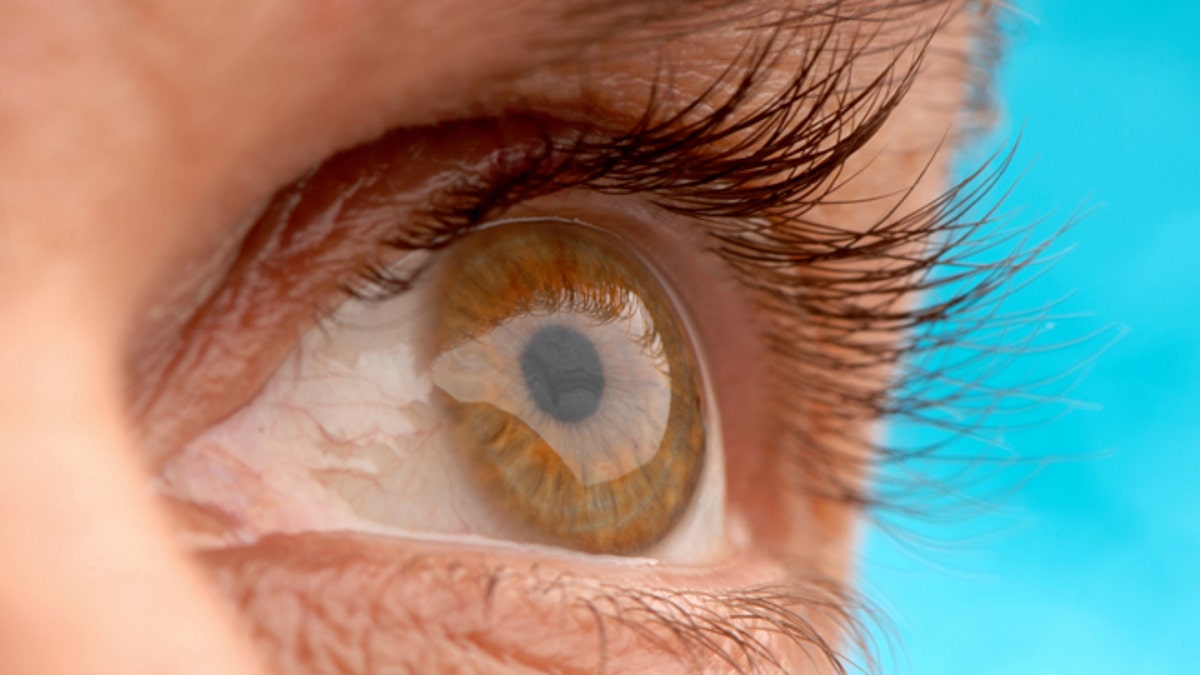
Examining the eyes is clinicians’ first line of action when a patient complains about a headache that won’t go away. When there’s pressure behind the eyes— either due to a serious ailment like a brain tumor or meningitis, or in the instance of a stroke— it’s because blood flow in the brain isn’t functioning properly, thus causing the brain to swell.
Researchers at the University of Florida have discovered that measuring the optic nerve sheath, the nerve that connects the eye and the brain, may help predict the death risk of patients with these and other neurologically stressful conditions. The study is being presented this week at the American Stroke Association’s International Stroke Conference 2015, and it focuses primarily on stroke patients.
“Our hypothesis was the measurement of the optic nerve sheath diameter will help us tell that there is something going on in the brain with regards to pressure … so we can act fast and do the necessary interventions without wasting time,” lead study author Vishnumurthy Shushrutha Hedna, an assistant professor in neurology at the University of Florida, told FoxNews.com.
Due to brain swelling, nerve sheath diameters are enlarged in stroke patients. But Hedna and his colleagues found a specific correlation between a patient’s nerve sheath diameter and his or her risk of dying within six months. The larger in diameter a nerve sheath was, the greater chance the patient would die.
As nerve sheath diameters increased by a millimeter— compared to patients who did not die of stroke within six months— a patient’s risk of dying was six times greater if the stroke occurred due to a blood vessel blockage, and six times higher for bleeding strokes.
The research also suggested a link between a larger nerve sheath and a higher incidence of disability six months after the measurement.
During a stroke, blood supply to the brain is interrupted or reduced, which leads to brain cell death. According to the Centers for Disease Control and Prevention (CDC), stroke is a leading cause of death in the U.S. and of serious long-term disability. Every year, more than 795,000 people have a stroke, and stroke accounts for 130,000— or one in 19— U.S. deaths annually.
When a stroke patient has increased brain pressure, doctors can perform a procedure called decompressive craniectomy, wherein part of the skull is removed then restored. The operation is also performed on people who have suffered from a traumatic brain injury. Other times, doctors prescribe medication, or a drain is placed in a patient’s head to reduce fluid buildup. The course of action depends on the severity of the condition, Hedna noted.
One of the most common methods for determining brain pressure, which often takes place after stroke, is using MRI and CAT scans. These don’t provide specific measurements and can be uncomfortable for patients due to radiation exposure, Hedna said. Invasive procedures consist of using a spinal tap or an intracranial pressure wire to examine the brain itself.
Researchers at the University of Florida conducted their study to determine a noninvasive and more clinician-friendly way to measure a patient’s optic nerve sheath. To do so, they used ocular ultrasounds—ultrasounds of the eyes— and measured the sheath that encased each patient’s optic nerve. They studied 86 stroke patients who were suspected of having pressure buildup in their skulls. Participants were recruited through the University of Florida’s Shands Hospital in Gainesville, Fla.
Researchers measured two dimensions of the nerve sheath in each eye the first and second days after a patient was hospitalized for stroke— about eight measurements total for most patients— then monitored if the patients died or survived six months later. Because some patients soon died afterward or were discharged from care following the first measurement, the study based its estimates primarily on measurements taken on the first day, researchers noted.
Patients who died of a stroke due to a blood vessel blockage had an average nerve sheath diameter of 5.82 millimeters, and those who survived had nerve sheath diameters that measured 5.33 millimeters. Among those patients with a bleeding stroke, those diameters were 6.23 millimeters and 5.72 millimeters, respectively.
Hedna said that specific measurement data could be used to determine proper intervention for a patient who has undergone stroke and has brain pressure. He added that optic ultrasounds currently aren’t used as a primary method for measuring a patient’s optic nerve sheath because the system is dependent on machine availability and is technician-dependent.
Educating nurses and clinicians on using ocular ultrasounds will ultimately be critical for the expansion of the method in hospitals, Hedna pointed out.
He and his team are currently applying for a grant to conduct further study. They plan to try to correlate their findings with real-time brain imaging.
“Instead of doing a million tests, we can do the ultrasound,” Hedna said. “This modality is a non-invasive, simple, cheap procedure which can save lives and can be done by anybody. It can help save thousands of lives.”
